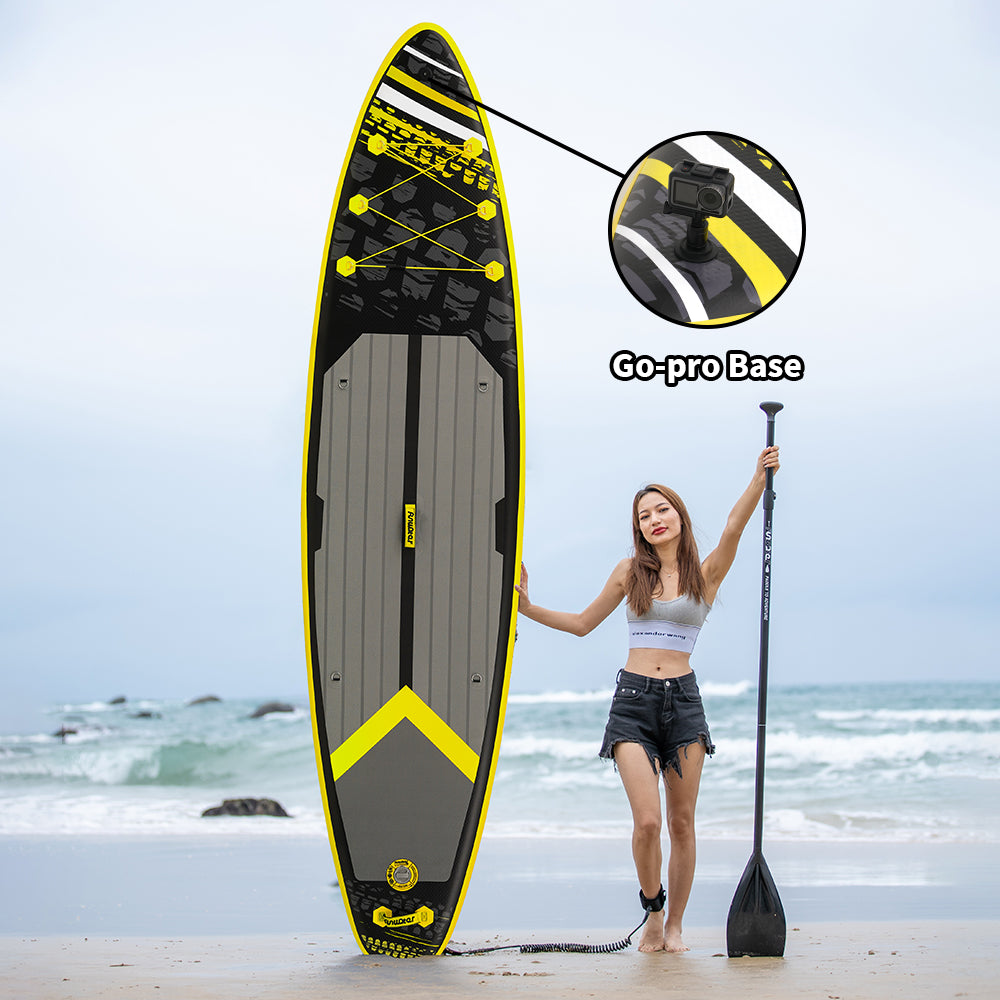
Advanced SUP Yoga: How Treksip5 (Tuyin 5)’s Wide-Tail Design Enhances Balance? Plus 6 Pose Tutorials
Introduction
SUP (Stand-Up Paddleboard) yoga, an emerging hybrid sport, has gained popularity among yoga and water sports enthusiasts in recent years. It blends the tranquility and balance of yoga with the fluidity of a paddleboard on water, offering a unique mind-body experience. For advancing in SUP yoga, improving balance is crucial—and equipment design plays a profound role. Treksip5 (Tuyin 5)’s unique wide-tail design provides an exceptional foundation for balance. Below, we explore how this design enhances balance and share 6 SUP yoga poses ideal for practice on Treksip5.
How Treksip5’s Wide-Tail Design Boosts Balance
1. Increased Tail Support Area
Treksip5’s wide-tail design significantly expands the support area at the board’s tail. Unlike traditional paddleboards with narrower tails, its tail is [X] cm wider than average. This extra space allows practitioners to adjust their foot position freely during pose transitions, similar to having a broader standing area on land, drastically reducing the risk of falling due to shifted重心. For example, in single-leg poses, the wide tail lets users plant their foot stably on the broader surface, offering solid support and making balance easier to maintain.
2. Optimized Weight Distribution
The wide-tail design helps evenly distribute weight across the board. With a larger tail area, weight is spread more uniformly, avoiding front-to-back imbalance caused by concentrated weight in the head or middle. When practitioners move on the board, this even distribution enhances stability. Imagine twisting poses: shifting重心 could tilt a poorly balanced board, but Treksip5’s wide tail mitigates this, providing steady support during transitions and boosting balance.
3. Improved Water Current Adaptability
Water currents heavily influence balance in SUP yoga. The wide tail better adapts to current changes—its larger surface area disperses water force effectively, reducing instability from currents. In choppy waters, users will find Treksip5 more stable, resisting drift and creating favorable conditions for maintaining balance.
6 SUP Yoga Pose Tutorials
1. Mountain Pose (Tadasana)
• Steps: Stand with feet together, big toes touching, heels slightly apart. Lift kneecaps, engage thigh muscles, tuck the abdomen, lift the chest, extend the spine upward. Let arms hang naturally, palms facing inward, and keep the head aligned.
• Tips for Treksip5: Use the wide tail’s stable support to plant feet firmly on the broader tail area. Leverage the extra space to find your vertical balance point on water. Focus on a fixed point ahead to enhance concentration and balance.
2. Tree Pose (Vrksasana)
• Steps: Start in Mountain Pose. Shift weight to the right foot, bend the left knee, and place the left foot on the right thigh (avoiding the knee). Press palms together at the chest, keep the spine extended, and breathe evenly.
• Tips for Treksip5: First, stabilize your feet on the wide tail. As you lift the foot, use the tail’s extra stability to adjust重心 slowly. The optimized weight distribution makes it easier to sense shifts, aiding balance. If struggling, place the foot on the calf first, then progress to the thigh.
3. Warrior I (Virabhadrasana I)
• Steps: Step feet one leg-length apart. Turn the right foot 90 degrees, left foot 30 degrees inward. Bend the right knee until the thigh is parallel to the water, shin vertical (knee over ankle). Raise arms overhead, palms together, extend the spine, and gaze at the right fingertips.
• Tips for Treksip5: The wide tail’s current adaptability keeps the board stable in ripples. Its broad support lets feet stay secure during transitions. Tune into how the tail interacts with currents, adjusting重心 to stay balanced.
4. Triangle Pose (Trikonasana)
• Steps: Stand with feet two shoulder-widths apart. Turn the right foot 90 degrees, left foot 30 degrees inward. Extend arms sideways, bend right to touch the right ankle or water, stretch the left arm upward, and gaze at the left fingers.
• Tips for Treksip5: Plant feet stably on the wide tail, distributing weight evenly. The expanded support area encourages confident side-bending. The optimized weight distribution prevents excessive tilting when leaning, so keep the spine long.
5. Seated Forward Fold (Paschimottanasana)
• Steps: Sit on the tail, legs straight and together. Inhale, lengthen the spine; exhale, hinge forward from the hips, grasping the feet or shins, and bring the forehead toward the knees.
• Tips for Treksip5: Use the wide tail’s stable platform by sitting on its broader section. Its stability keeps the board steady during folding. Lean forward mindfully, relying on the tail’s balance to avoid tipping. Use a yoga strap if reaching the feet is tough.
6. Hero Pose (Virasana)
• Steps: Kneel with knees together, calves splayed outward, and sit back onto the floor between the feet. Keep the back straight, hands resting on the thighs.
• Tips for Treksip5: The wide tail offers ample space for this pose. Place knees on the tail, lower the hips slowly, and feel the tail’s steady support. Its resistance to water晃动 helps maintain balance. If hips don’t reach the feet,垫 a blanket or block.
Conclusion
Treksip5’s wide-tail design delivers significant balance benefits for advanced SUP yoga practitioners. By increasing support, optimizing weight distribution, and adapting to currents, it eases balance control, unlocking the beauty of SUP yoga. These 6 poses will help you leverage Treksip5’s features for a unique aquatic yoga journey. What balance challenges have you faced in SUP yoga? Share your experiences—let’s explore more ways to enhance balance together!